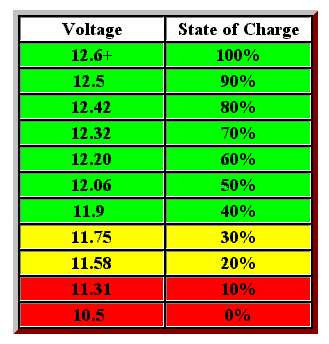I called the dealership to get more details about this "test". They were applying an 850 amp load to the battery for thirty seconds! I checked the starting amperage with my DC clamp on ammeter, it was less than 250.
Why the **** were they applying over three times the peak load for over three times the normal cranking period? "Uh, that's what the Snap-On guy recommended". No wonder it fried the battery, I suppose the intercell connectors failed.
That's a cranking amps sort of test. It doesn't measure capacity, just current draw capability of the battery.
Typical old school CCA test, was half of the rated amp load for 15 seconds, and the battery had to stay above 9.6V at the end, at anything above about 50F.
850 is big but if the CCA rating of the battery was at least that high, it's unlikely to burn out intercell connectors with it. Probably just "boiled" the electrolyte. Easy enough to tell really, resting voltage would be wrong on a damaged battery by one cell worth. But you'd need to know what it was before the test to prove damage.
So if the battery was rated at 800 CCA the test would be done at 400A. It wouldn't matter what the vehicle actually draws, it would be based on the battery rating.
The 15 seconds is also "half" -- it's half of the spec for CCA ratings, which are done for 30 seconds (in a test lab, with a "frozen" battery).
Other commonly seen field/shop tests attempt to measure internal battery resistance with AC to more or less accurate degrees. But most shops use some sort of quick high current or longer lower current load test to figure out battery health.
As an aside: Most people won't stick around for the hours needed to run a real load test on a $100 item.


